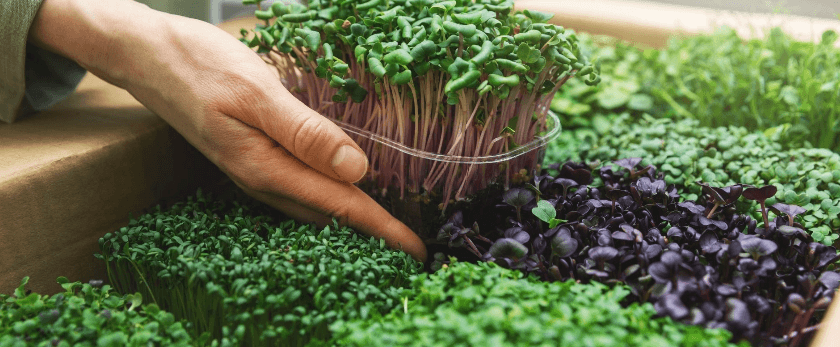Microgreens are a popular and nutritious addition to any meal. These tiny greens are packed with flavor and nutrients, making them a favorite among health-conscious individuals. But did you know that you can easily grow microgreens at home? Not only is it a fun and rewarding activity, but it also helps reduce your carbon footprint by reducing the need for transportation and packaging. In this article, we'll discuss how to grow microgreens and the benefits of incorporating them into your diet.
What are Microgreens?
Microgreens are young vegetable greens that are harvested when they are only a few inches tall. They are smaller than baby greens but larger than sprouts, making them the perfect size for adding to salads, sandwiches, and other dishes. Microgreens come in a variety of flavors, including spicy, sweet, and tangy, and can be grown from a wide range of plants, such as broccoli, kale, radish, and sunflower.
Why Grow Microgreens?
Aside from their delicious taste, microgreens are also packed with nutrients. Studies have shown that microgreens contain higher levels of vitamins, minerals, and antioxidants compared to their mature counterparts. They are also a great source of fiber, which is essential for a healthy digestive system. Additionally, growing your own microgreens is a sustainable and eco-friendly way to add fresh produce to your diet.
How to Care for Microgreens
Growing microgreens is a simple and straightforward process. Here are the key steps to follow:
Watering
Microgreens require consistent moisture to grow properly. The best way to water them is from the bottom up. Place your microgreens tray in a shallow dish filled with water and let the soil soak up the water from the bottom. This method ensures that the roots get enough water without over-saturating the soil. Keep the soil moist but not waterlogged to prevent mold growth.
Light
Microgreens need plenty of light to grow. Place them in a sunny spot, such as a windowsill, where they can get at least 6 hours of sunlight per day. If natural light is not available, you can use a grow light to provide the necessary light for your microgreens.
Soil
The type of soil you use is crucial for the success of your microgreens. Use a high-quality potting mix or seed starting mix that is light and well-draining. Avoid using garden soil, as it may contain pests and diseases that can harm your microgreens.
Fertilizer
Microgreens do not require much fertilizer, as they are harvested at a young age. However, if you notice that your microgreens are not growing as quickly as they should, you can use a diluted liquid fertilizer once a week. Be sure to follow the instructions on the fertilizer package and avoid over-fertilizing, as it can lead to stunted growth or even kill your microgreens.

Pruning
As your microgreens grow, you may notice that some of them are taller than others. To ensure even growth, use a pair of clean scissors to trim the taller greens down to the same height as the others. You can also harvest individual microgreens as needed, leaving the rest to continue growing.
What is the Best Time to Grow Microgreens?
Microgreens can be grown year-round, making them a convenient and accessible source of fresh produce. However, the best time to grow microgreens depends on the type of plant you are growing. Some plants, such as radish and broccoli, prefer cooler temperatures and can be grown in the spring or fall. Others, like sunflower and basil, thrive in warmer temperatures and can be grown in the summer.
Common Problems with Microgreens
While growing microgreens is relatively easy, there are a few common problems that you may encounter. Here are some tips on how to prevent and address these issues:
Mold
Mold growth is a common problem with microgreens, especially if the soil is too wet. To prevent mold, make sure to water your microgreens from the bottom and avoid over-watering. If you notice mold, remove the affected plants and adjust your watering routine.
Pests
Pests, such as aphids and fungus gnats, can also be a problem for microgreens. To prevent pests, make sure to use clean soil and water, and keep your growing area clean. If you notice pests, you can use natural methods, such as neem oil or insecticidal soap, to get rid of them.
Leggy Growth
Leggy growth occurs when your microgreens are not getting enough light. To prevent this, make sure to place your microgreens in a sunny spot or use a grow light. You can also rotate your tray every day to ensure even light distribution.
In Conclusion
Growing microgreens is a simple and rewarding activity that can benefit both your health and the environment. By following these tips on how to care for microgreens, you can enjoy fresh and nutritious greens all year round. So why not give it a try and start growing your own microgreens today? Your taste buds and the planet will thank you.










